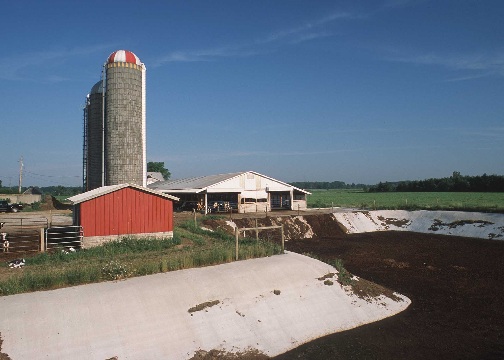Competency Area 8: Concentrated source pollution AEM
PO 84. Explain establishment and/or maintenance requirements of barnyards and barnyard runoff treatment options.
Barnyards should be constructed and established so that cleaning can be easily and efficiently accomplished without leaving residual deposits, especially in areas where the residuals would impede rainfall runoff or runoff collection devices. Barnyards that are cleaned frequently improve animal health, are easier to clean, and reduce concentrations of contaminants in any runoff. Barnyards are sloped to runoff collection chambers, and concrete curbs are usually installed to which cleaning equipment can push against. Barnyard runoff treatment options are to collect and transfer the effluent to a manure storage lagoon, or to utilize a series of screens and settling tanks to remove suspended materials and digestible solids, and then to transfer the runoff effluent to a vegetated filter or other treatment area.
Considerations should be given to limiting the size of barnyards, eliminating them altogether, or placing a roof over them to minimize or prevent the amount of contaminated runoff water that is generated. The real need and purpose for a barnyard should be addressed, as barnyards may not be necessary.
Smaller travel ways can perhaps be used to move livestock between the milking parlor and the pasture, or other feeding and holding areas. Wastewater treatment strips may be very difficult to build for barnyards in some areas because of limiting site conditions and current standard (regulatory) requirements.

Concrete-lined manure storage pit with push-off slope
Photo courtesy of NRCS
Quick Links
- Competency Area 1: Basic soil properties
- Competency Area 2: Soil hydrology AEM
- Competency Area 3: Drainage and irrigation AEM
- Competency Area 4: Soil health and compaction
- Competency Area 5: Soil conservation AEM
- Competency Area 6: Watershed hydrology AEM
- Competency Area 7: Non-point source pollution AEM
- Competency Area 8: Concentrated source pollution AEM
- Competency Area 9: Conservation planning AEM
